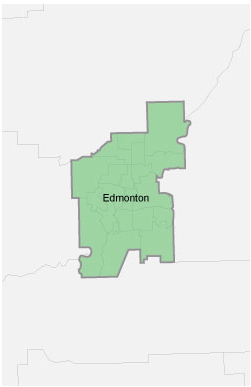Fall is here, and as the leaves start to change, so should our homes. It never seems like fall lasts long in Alberta. To prepare for the approaching winter, here is the Encor Fall Energy Checklist: a step-by-step guide to prepare your home for the season and everything that comes after it.
Clean up those gutters
Between the buildup of dirt, debris, and falling leaves, it's almost too easy for your gutters, downspouts, and eavestroughs to become clogged. Blocked gutters can lead to damaged exteriors, rust and corrosion, and freezing and cracking when the snow starts to arrive. Fall is the perfect time to clean them before your roof becomes too slippery and mud hardens. If you want an easy tip, use an old plastic spatula to clean the gutters. It avoids scratching, and contours to the shape of the gutter and grime can wipe right off of it, too! And while you're up there, take a look for any damaged shingles you might need to replace.
Drain outdoor faucets
Close any shut-off valves and open your outside faucets to help drain the lines. Also, drain any hoses or sprinklers. If any water remains in the lines, it can freeze, expand, and can even burst and cause serious damage. Depending on how much water was in the lines, you might not even notice until next spring. As for hoses, once drained you can curl them up and find a place to store them away such as the garage or shed.
Sweep the chimney
Even if you only use your fireplace occasionally, you should always check it annually for damage or potential hazards. One thing to look out for is build-up of creosote in the flume. What is creosote? It's a flammable by-product from burning wood. If it accumulates too much, it can lead to a devastating fire. If you shine a flashlight up your chimney and notice a build-up of any deposits around 1/8 inch thick, you should call a chimney sweep and get it professionally cleaned. It's also always important to ensure there is no damage to the damper, flue, or chimney itself and to keep an eye out for blockages like bird's nests.
Change your furnace filter
Changing your furnace filter is one of the easiest things to keep your furnace in good shape. The worst thing that can happen in winter is losing your furnace, so keeping up with annual maintenance is always important. If you haven't changed it in a while, take a look at the current condition of the filter and see how dirty it is and if you need to use a fresh one. A good rule of thumb is to change 1-2 inch filters every three months, 4-inch filters every six months, and 5-inch filters every 12 months. And for aging furnaces, the average lifespan of a gas furnace is 15-20 years so always plan ahead, especially before the seasons change.
Inspect the weather-stripping and caulking
You might enjoy autumn breezes, but maybe not as much if you feel them in your home. If you feel drafts around your doors or windows it could be a sign of old weather stripping or poor caulking. Weather-stripping is an adhesive-backed foam that typically lasts only about 1-3 years and saves you money by keeping warm air in, and cold air out. A better seal will keep you and your family warm this season and make a huge difference in your heating efficiency
Check CO2 and smoke detectors
You should already be checking these devices once a year to ensure they are working properly but doing so in the fall can be the best time. As you start running your furnace more, these devices can also tell you know that everything is running correctly. If your heater is malfunctioning, it might emit carbon monoxide or smoke. And since carbon monoxide is a harmful gas with no colour or odour, a quick test of your CO2 and smoke detectors and a replacing batteries will give you peace of mind for the entire year.
Fix driveway cracks
Those small cracks in your driveway might not be much trouble right now but as the snow starts to fall next season and water gets into those cracks, they will start to freeze, expand, and make the cracks even bigger! The cracks can lead to the concrete crumbling or creating larger potholes. Avoid all of that by dealing with it in the fall before it worsens. Visit a local hardware store, pick up some concrete crack sealer, fill them all up, and be done with it sooner than later.
Check for condensation and humidity
Do you notice excess moisture forming on your windows? Or increased static electricity? These can be signs your home's humidity level is too high or too low. If you notice condensation on windows or water vapour in the air, the humidity is too high, and a dehumidifier can offer a quick and easy fix. If your skin is dryer than usual or your lips are chapped, the humidity might be too low, and a humidifier can help balance it out. Low humidity can also be problem if you don't clean your dryer vents. A buildup of lint and increased static electricity can cause a fire, so keep the vents clean and keep your humidity in check.
Keep this list handy and check back next year when you need to do it all over again. A safe and efficient fall can make for an even safer and more efficient winter. For more helpful tips, check out our blog!











